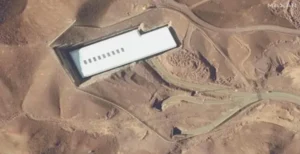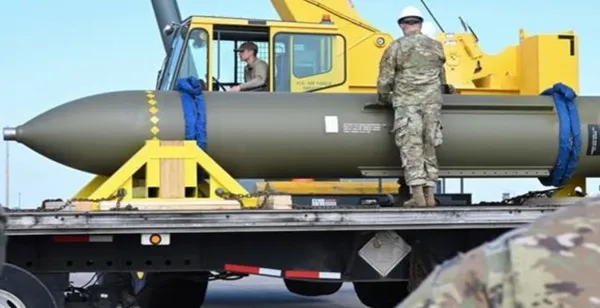Could the U.S. Deploy Its Bunker Buster Bomb on Iran’s Fordow Nuclear Site? What Might Happen If It Does
As tensions rise between Israel and Iran over the latter’s suspected nuclear weapons program, military analysts are speculating whether the United States could consider deploying its most powerful non-nuclear bomb — the GBU-57A/B Massive Ordnance Penetrator, often referred to as the
“bunker buster” bomb — against Iran’s fortified
Fordow nuclear facility.
What Is the Bunker Buster Bomb?
The
GBU-57 Massive Ordnance Penetrator (MOP) is a 30,000-pound precision-guided weapon specifically engineered to penetrate deep into fortified underground targets. Capable of smashing through up to 200 feet of reinforced concrete or earth before detonation, it was designed for strategic targets like Iran’s Fordow site, a deeply buried uranium enrichment facility.
However, deploying the GBU-57 requires the U.S. Air Force’s
B-2 Spirit stealth bomber, the only aircraft capable of carrying and delivering this massive bomb. These bombers are based at Whiteman Air Force Base in Missouri and would need approximately 15 hours to reach Iran if called upon.
Why Fordow Is a Strategic Target
Located about 95 kilometers southwest of Tehran,
Iran’s Fordow Fuel Enrichment Plant is carved into the side of a mountain and lies an estimated 260 to 300 feet underground — deeper than what even the bunker buster is guaranteed to reach with total success. The facility was intended to be impervious to most aerial attacks and remains one of Iran’s most heavily fortified sites.
Although Iran originally agreed to suspend enrichment at Fordow under the 2015
Joint Comprehensive Plan of Action (JCPOA), it resumed activities there after the U.S. withdrew from the nuclear deal in 2018.
Could the U.S. Realistically Use the GBU-57?
Reports suggest that the Fordow facility may be within reach of the
GBU-57, though some experts believe even this powerful bomb may not fully destroy the site due to its extreme depth. Former U.S. military officials have noted that the bomb’s effect is highly concentrated — designed to destroy underground bunkers with precision rather than cause large surface explosions.
With
Israel allegedly weakening Iran’s air defense systems through recent airstrikes, military strategists believe a U.S. stealth bomber could now potentially navigate through Iranian airspace more easily, making a bunker-buster strike technically feasible.
However, using such a weapon would mark a significant escalation. As of now, the U.S. has never deployed the
bunker buster bomb in combat, keeping it reserved for high-value strategic scenarios — such as against nuclear facilities in Iran or North Korea.
Potential Consequences of a U.S. Airstrike on Fordow
If the U.S. were to strike Fordow, it would likely trigger significant geopolitical fallout. Iran has consistently denied it is seeking nuclear weapons, claiming its nuclear program is purely for peaceful purposes. Any direct U.S. military action could prompt retaliation, potentially drawing American forces deeper into a
regional conflict and destabilizing an already volatile Middle East.
Moreover, international watchdogs like the
International Atomic Energy Agency (IAEA) have issued warnings against military action targeting nuclear facilities, citing risks of environmental catastrophe and broader conflict escalation.
Conclusion
While the
GBU-57 bunker buster bomb is one of the most formidable tools in the U.S. military arsenal, its use against Iran’s Fordow nuclear facility would represent a drastic shift in policy and risk inflaming tensions across the region. Whether or not the U.S. will resort to such a strike remains uncertain, especially as diplomatic and military calculations continue to evolve amid rising hostilities.












